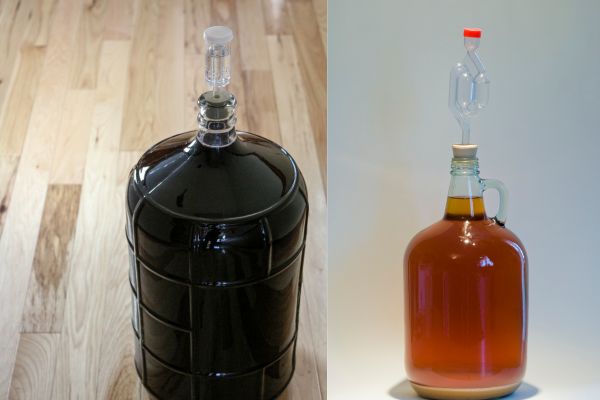If you’re a home vintner or a professional winemaker, you’ve likely come across the term kieselsol during your wine clarification process.
It’s a popular fining agent used in the wine industry to clear up your wine. But the question many people ask is, how much kieselsol per gallon of wine should you use?
As a rule of thumb, you should use 1ml of kieselsol per gallon of wine. However, this can vary depending on the wine type and the degree of cloudiness.
This blog post will delve into the details of using kieselsol, its benefits, and factors to consider before using it.
The Role of Kieselsol in Wine Making
Kieselsol, also known as silicic acid, is a fining agent commonly used in winemaking to remove proteins, polyphenols, and other impurities that can cloud wine.
It works by attracting these impurities, forming larger particles that settle at the bottom of the container for easy removal.
It’s worth noting that kieselsol works best when used alongside another fining agent like chitosan. The two create a charge reaction that effectively removes the impurities, leaving you with a clear, appealing wine.
Why You Should Use Kieselsol
The main reason you should use kieselsol in your wine is to improve its clarity. Nobody wants to drink a cloudy wine. Not only does it look unappealing, but it can also affect the taste and stability of the wine.
Kieselsol works by binding to these particles and forming larger aggregates that can be easily removed through filtration or settling. This process helps improve the visual appearance and stability of the wine, enhancing its overall quality.

Another benefit of using kieselsol and chitosan is that they are both vegetarian-friendly.
Unlike some other fining agents like isinglass (made from fish bladders), these two are suitable for everyone, including those on a vegetarian or vegan diet.
How to Use Kieselsol
When using kieselsol, always remember to follow the manufacturer’s instructions. Typically, you’ll need to add 1ml of kieselsol per gallon of wine. However, this can vary depending on the cloudiness of your wine.
Before you add kieselsol, ensure the wine is at a temperature between 10-30 degrees Celsius for the best results.
Add the kieselsol slowly, stirring gently to ensure it mixes well with the wine. After this, you can add the chitosan, stirring gently again.
Factors to Consider Before Using Kieselsol
Before using kieselsol, there are a few things you should consider.
First, check the pH of your wine. Kieselsol works best in wines with a pH of 3.0-4.0. If your wine’s pH is outside this range, you may need to adjust it before adding the kieselsol.
Secondly, consider the type of wine you’re making. White wines generally require less kieselsol than red wines due to their lower tannin content. Adjust the amount of kieselsol accordingly.
The Impact of Kieselsol on Taste and Aroma
If used correctly, kieselsol should not affect the taste or aroma of your wine. However, overuse can strip the wine of its character, leading to a bland taste and aroma. Always use the recommended amount to avoid this.

Storing Your Wine After Using Kieselsol
Once you’ve added kieselsol and chitosan, let the wine rest for a few days to a week to allow the fining process to take place. After this, you can rack the wine, removing the sediment at the bottom.
The wine should then be stored in a cool, dark place to mature. Remember, the longer you store your wine, the better it will taste.
Conclusion
Kieselsol is an effective fining agent that can significantly improve the clarity of your wine. Remember to use it alongside chitosan for the best results. Use 1ml of kieselsol per gallon of wine, adjusting as necessary based on the type and cloudiness of your wine.
Here are a few key takeaways from this post:
1. Kieselsol is a fining agent used to clarify wine.
2. You should use 1ml of kieselsol per gallon of wine.
3. Kieselsol works best when used with chitosan.
4. It’s ideal for wines with a pH of 3.0-4.0.
5. White wines generally require less kieselsol than red wines.
6. Overusing kieselsol can affect the taste and aroma of your wine.
7. After using kieselsol, let the wine rest for a few days to a week before racking.
8. Kieselsol is vegetarian-friendly.
9. The wine should be stored in a cool, dark place after racking.
10. The longer you store your wine, the better it will taste.
FAQs
How long does it take for Kieselsol to work?
Kieselsol typically works within a few hours to a few days, depending on the specific application. It is commonly used as a fining agent in winemaking and brewing to clarify liquids by removing suspended particles. The exact timeframe may vary based on the dosage, temperature, and other factors, but noticeable results can often be observed relatively quickly.
What happens if you add Chitosan before Kieselsol?
If you add Chitosan before Kieselsol, the Chitosan will likely bind with any positively charged particles present in the solution. This can result in the formation of larger particles or flocs. When Kieselsol is added afterwards, it may not be able to effectively bind with the remaining particles, leading to reduced clarification or fining efficiency. It is generally recommended to add Kieselsol before Chitosan to achieve optimal results in processes like wine or beer clarification.
How do you use Kieselsol and chitosan together?
Kieselsol and chitosan are commonly used as fining agents in winemaking. Kieselsol, a colloidal silica solution, is added first to the wine to bind with unwanted particles and create larger aggregates that can be easily removed. Chitosan, derived from the shells of crustaceans, is then added to further clarify the wine by adsorbing and precipitating remaining impurities. The two agents are typically used together, with Kieselsol being added first, followed by chitosan. The dosage and application process may vary depending on the specific wine and desired level of clarification.





